It's a bit late, but anyway, here the proper ways:
HTML-Encode (HTML encoding = XML encoding):
DECLARE @s NVARCHAR(100)
SET @s = '<html>unsafe & safe Utf8CharsDon''tGetEncoded ÄöÜ - "Conex"<html>'
SELECT (SELECT @s FOR XML PATH(''))
HTML-encode in a query:
SELECT
FIELD_NAME
,(SELECT FIELD_NAME AS [text()] FOR XML PATH('')) AS FIELD_NAME_HtmlENcoded
FROM TABLE_NAME
HTML-Decode:
SELECT CAST('<root>' + '<root>Test&123' + '</root>' AS XML).value(N'(root)[1]', N'varchar(max)');
If you want to do it properly, you can use a CLR-stored procedure.
However, it gets a bit complicated, because you can't use the System.Web-Assembly in CLR-stored-procedures (so you can't do System.Web.HttpUtility.HtmlDecode(htmlEncodedStr);). So you have to write your own HttpUtility class, which I wouldn't recommend, especially for decoding.
Fortunately, you can rip System.Web.HttpUtility out of the mono sourcecode (.NET for Linux). Then you can use HttpUtility without referencing system.web.
Then you write this CLR-Stored-Procedure:
using System;
using System.Collections.Generic;
using System.Text;
using Microsoft.SqlServer.Server;
using System.Data.SqlTypes;
//using Microsoft.SqlServer.Types;
namespace ClrFunctionsLibrary
{
public class Test
{
[Microsoft.SqlServer.Server.SqlFunction]
public static SqlString HtmlEncode(SqlString sqlstrTextThatNeedsEncoding)
{
string strHtmlEncoded = System.Web.HttpUtility.HtmlEncode(sqlstrTextThatNeedsEncoding.Value);
SqlString sqlstrReturnValue = new SqlString(strHtmlEncoded);
return sqlstrReturnValue;
}
[Microsoft.SqlServer.Server.SqlFunction]
public static SqlString HtmlDecode(SqlString sqlstrHtmlEncodedText)
{
string strHtmlDecoded = System.Web.HttpUtility.HtmlDecode(sqlstrHtmlEncodedText.Value);
SqlString sqlstrReturnValue = new SqlString(strHtmlDecoded);
return sqlstrReturnValue;
}
// ClrFunctionsLibrary.Test.GetPassword
//[Microsoft.SqlServer.Server.SqlFunction]
//public static SqlString GetPassword(SqlString sqlstrEncryptedPassword)
//{
// string strDecryptedPassword = libPortalSecurity.AperturePortal.DecryptPassword(sqlstrEncryptedPassword.Value);
// SqlString sqlstrReturnValue = new SqlString(sqlstrEncryptedPassword.Value + "hello");
// return sqlstrReturnValue;
//}
public const double SALES_TAX = .086;
// http://msdn.microsoft.com/en-us/library/w2kae45k(v=vs.80).aspx
[SqlFunction()]
public static SqlDouble addTax(SqlDouble originalAmount)
{
SqlDouble taxAmount = originalAmount * SALES_TAX;
return originalAmount + taxAmount;
}
} // End Class Test
} // End Namespace ClrFunctionsLibrary
And register it:
GO
/*
--http://stackoverflow.com/questions/72281/error-running-clr-stored-proc
-- For unsafe permission
EXEC sp_changedbowner 'sa'
ALTER DATABASE YOUR_DB_NAME SET TRUSTWORTHY ON
GO
*/
IF EXISTS (SELECT * FROM sys.objects WHERE object_id = OBJECT_ID(N'[dbo].[HtmlEncode]') AND type in (N'FN', N'IF', N'TF', N'FS', N'FT'))
DROP FUNCTION [dbo].[HtmlEncode]
GO
IF EXISTS (SELECT * FROM sys.objects WHERE object_id = OBJECT_ID(N'[dbo].[HtmlDecode]') AND type in (N'FN', N'IF', N'TF', N'FS', N'FT'))
DROP FUNCTION [dbo].[HtmlDecode]
GO
IF EXISTS (SELECT * FROM sys.assemblies asms WHERE asms.name = N'ClrFunctionsLibrary' and is_user_defined = 1)
DROP ASSEMBLY [ClrFunctionsLibrary]
GO
--http://msdn.microsoft.com/en-us/library/ms345101.aspx
CREATE ASSEMBLY [ClrFunctionsLibrary]
AUTHORIZATION [dbo]
FROM 'D:\username\documents\visual studio 2010\Projects\ClrFunctionsLibrary\ClrFunctionsLibrary\bin\Debug\ClrFunctionsLibrary.dll'
WITH PERMISSION_SET = UNSAFE --EXTERNAL_ACCESS --SAFE
;
GO
CREATE FUNCTION [dbo].[HtmlDecode](@value [nvarchar](max))
RETURNS [nvarchar](max) WITH EXECUTE AS CALLER
AS
-- [AssemblyName].[Namespace.Class].[FunctionName]
EXTERNAL NAME [ClrFunctionsLibrary].[ClrFunctionsLibrary.Test].[HtmlDecode]
GO
CREATE FUNCTION [dbo].[HtmlEncode](@value [nvarchar](max))
RETURNS [nvarchar](max) WITH EXECUTE AS CALLER
AS
-- [AssemblyName].[Namespace.Class].[FunctionName]
EXTERNAL NAME [ClrFunctionsLibrary].[ClrFunctionsLibrary.Test].[HtmlEncode]
GO
/*
EXEC sp_CONFIGURE 'show advanced options' , '1';
GO
RECONFIGURE;
GO
EXEC sp_CONFIGURE 'clr enabled' , '1'
GO
RECONFIGURE;
GO
EXEC sp_CONFIGURE 'show advanced options' , '0';
GO
RECONFIGURE;
*/
Afterwards, you can use it like normal functions:
SELECT
dbo.HtmlEncode('helloäÖühello123') AS Encoded
,dbo.HtmlDecode('helloäÖühello123') AS Decoded
Anybody who just copy-pastes, please note that for efficiency reasons, you would use
public const double SALES_TAX = 1.086;
// http://msdn.microsoft.com/en-us/library/w2kae45k(v=vs.80).aspx
[SqlFunction()]
public static SqlDouble addTax(SqlDouble originalAmount)
{
return originalAmount * SALES_TAX;
}
if you'd use this function in production.
See here for the edited mono classes:
http://pastebin.com/pXi57iZ3
http://pastebin.com/2bfGKBte
You need to define NET_2_0 in the build options

